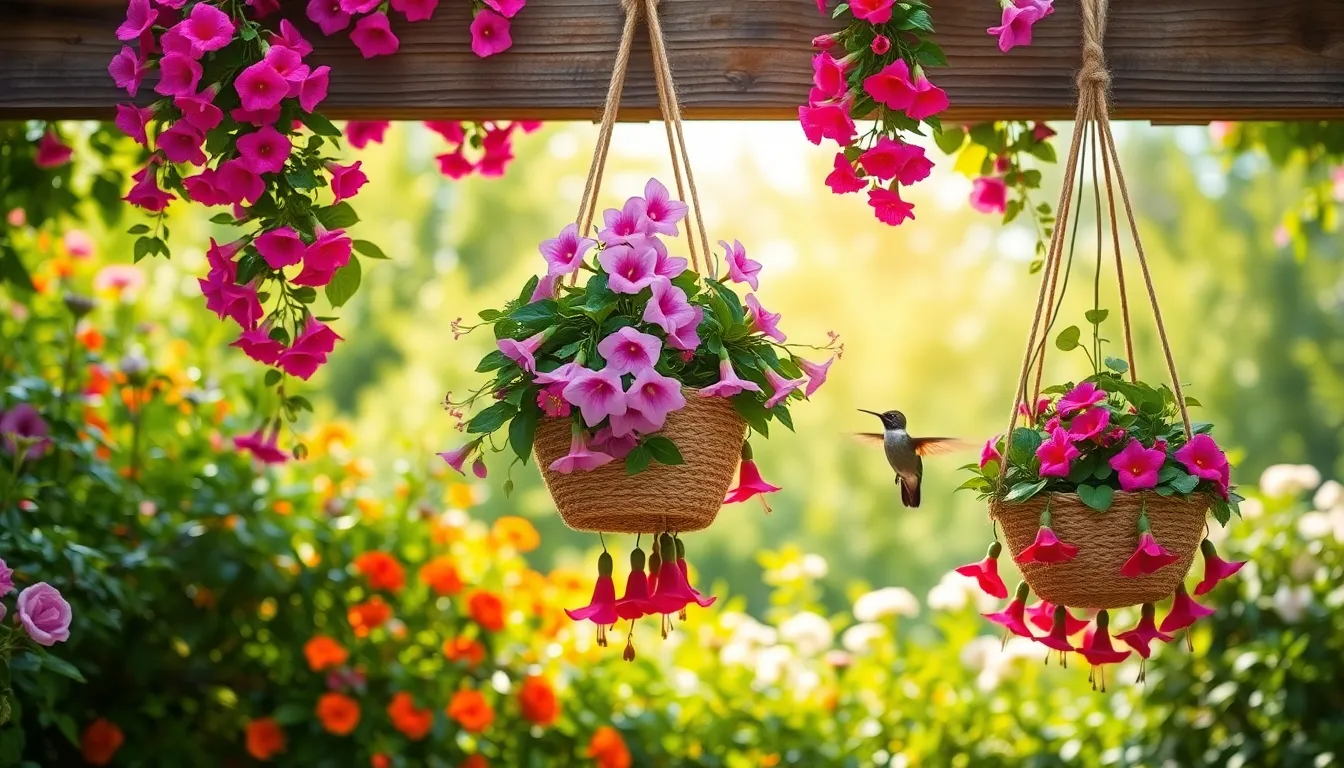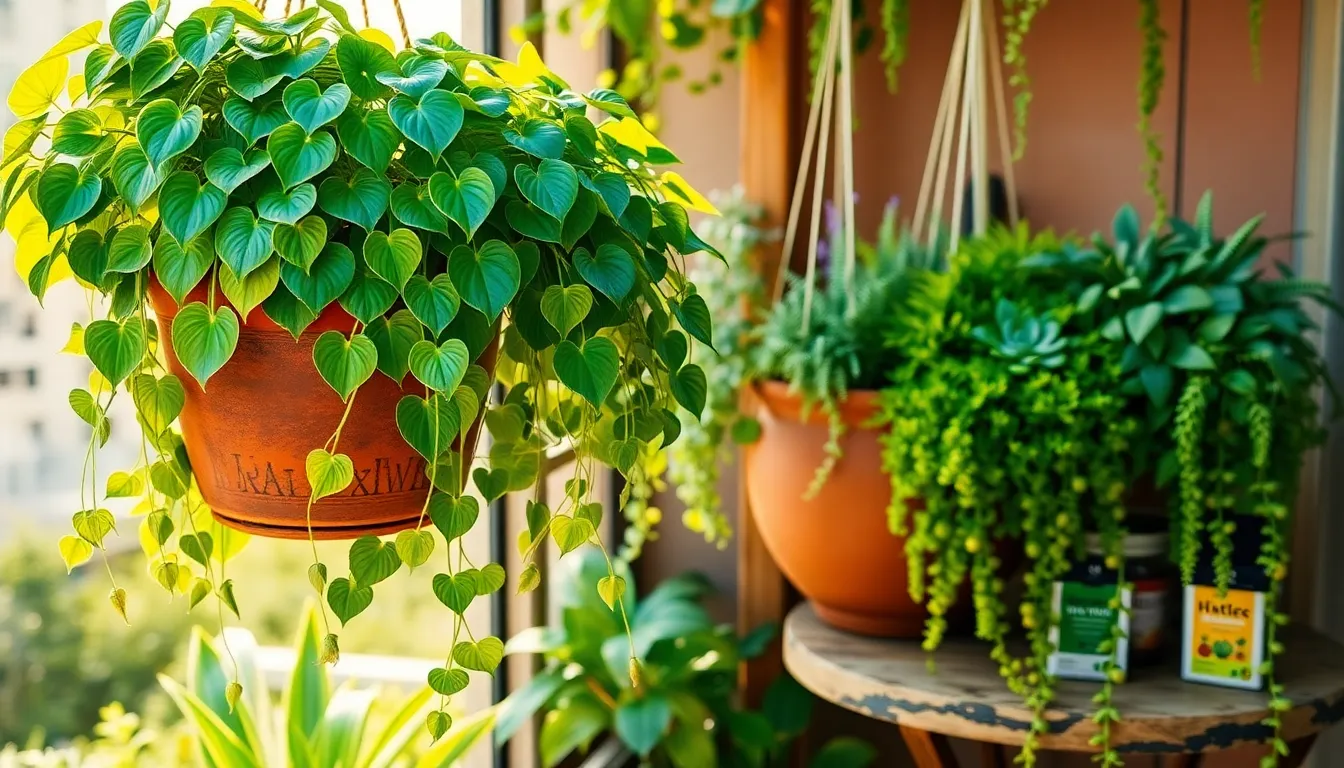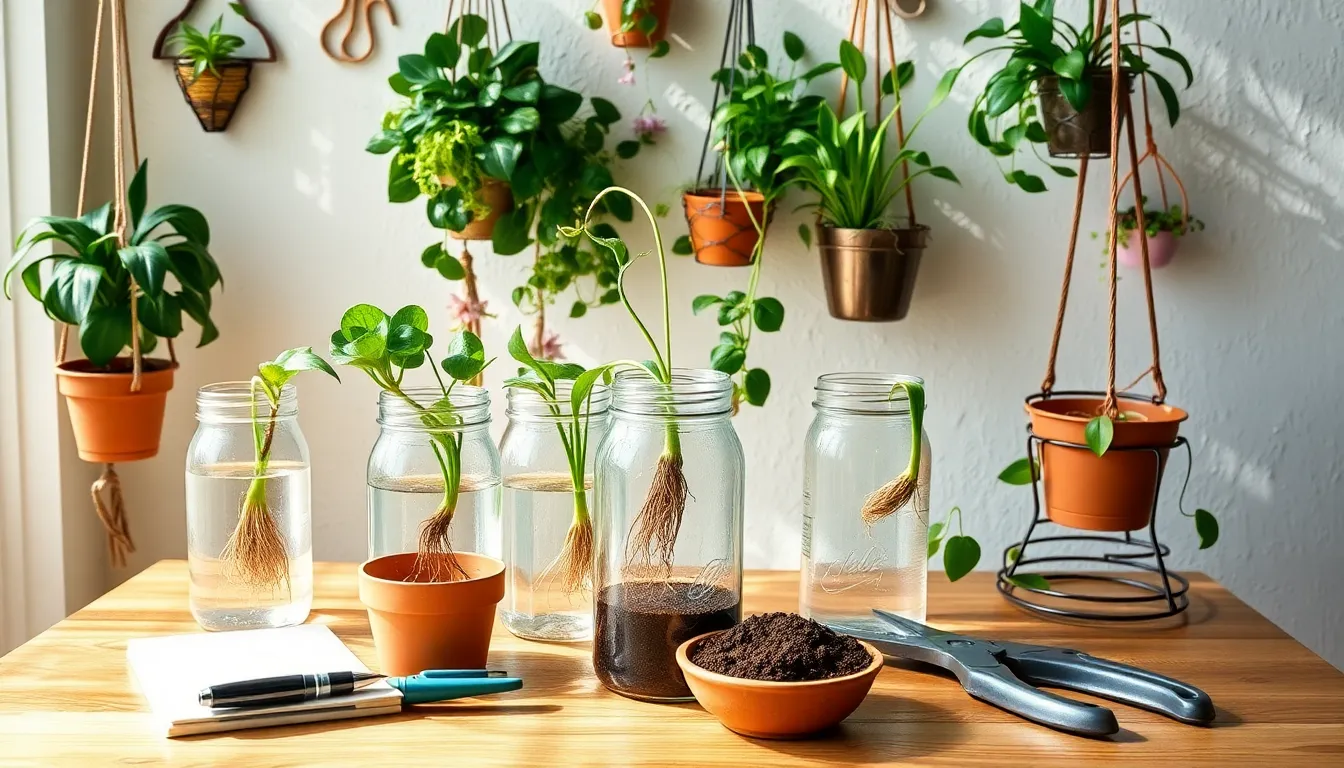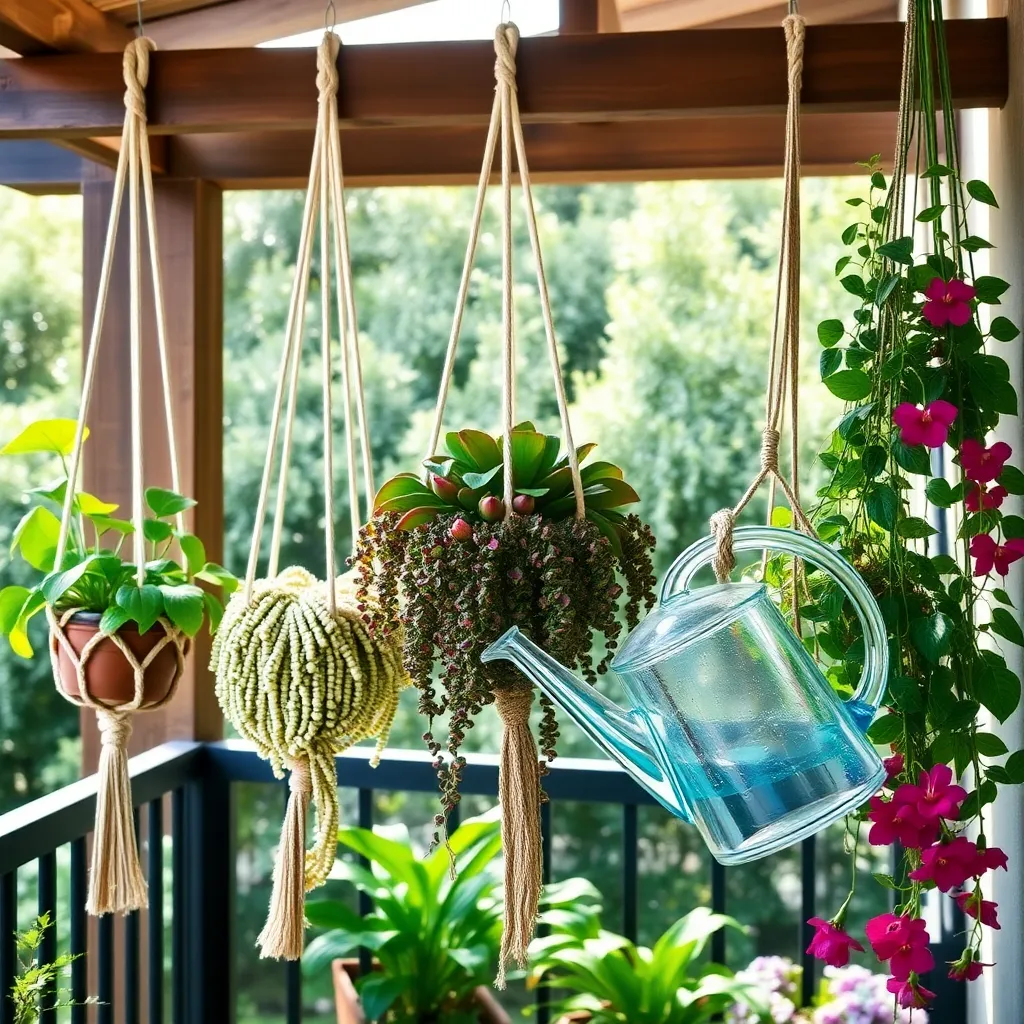Welcome to the world of indoor gardening, where the joy of cultivating lush, vibrant plants meets the rewarding task of supporting our essential pollinators. Whether you’re just starting your green thumb journey or you’ve long mastered the art of nurturing houseplants, our guide to the “Top 10 Hanging Plants That Attract Pollinators” is designed to inspire and empower you. These plants not only beautify your living space but also create a thriving micro-ecosystem that encourages biodiversity right in your home.
Delving into this guide, you’ll uncover a treasure trove of practical tips and insights tailored for both novices and seasoned plant enthusiasts. These hanging wonders are more than mere decorations; they’re your allies in fostering a healthier environment and promoting the well-being of vital pollinators like bees and butterflies. By choosing the right plants from our carefully curated list, you’ll enjoy the satisfaction of knowing you’re contributing to a greener world while basking in the serene beauty of nature indoors. Get ready to embark on a gardening adventure that promises growth, beauty, and a touch of environmental heroism.
Fuchsia (Vibrant Blooms for Hummingbirds)
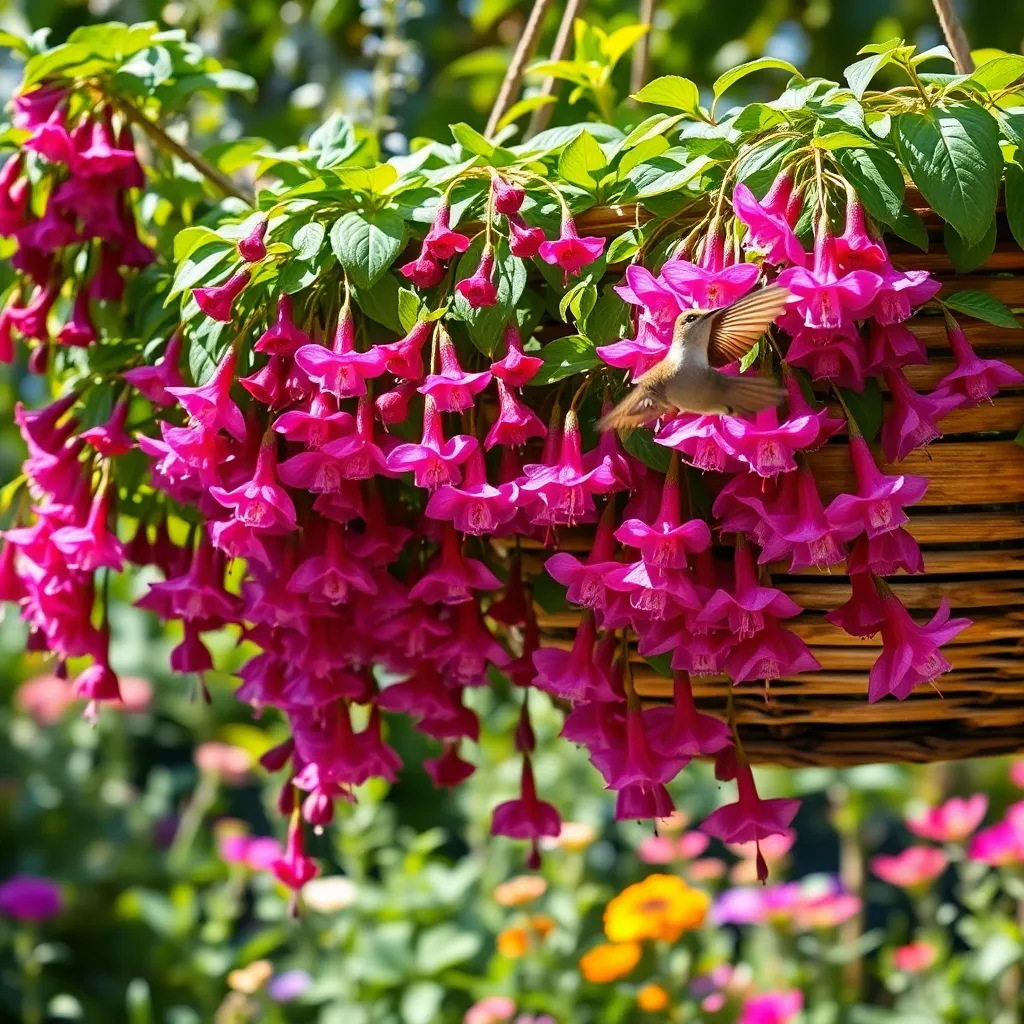
Fuchsias are a fantastic choice for hanging baskets, offering vibrant blooms that attract hummingbirds with their pendulous flowers. These plants thrive in shaded to partially shaded areas, making them ideal for gardeners with sheltered porches or patios.
To grow fuchsias successfully, use a well-draining potting mix enriched with organic matter to ensure healthy growth. Regular watering is essential, but be cautious to avoid waterlogging, which can cause root rot.
Prune fuchsias regularly to encourage bushier growth and more blooms, pinching back tips after flowering. During the growing season, feed them every two weeks with a balanced liquid fertilizer to support continuous blooming.
For experienced gardeners looking to propagate, fuchsias can be easily grown from cuttings. Simply take a healthy stem cutting, remove the lower leaves, and place it in a moist growing medium until roots develop.
Lantana (Clustered Flowers for Butterflies)
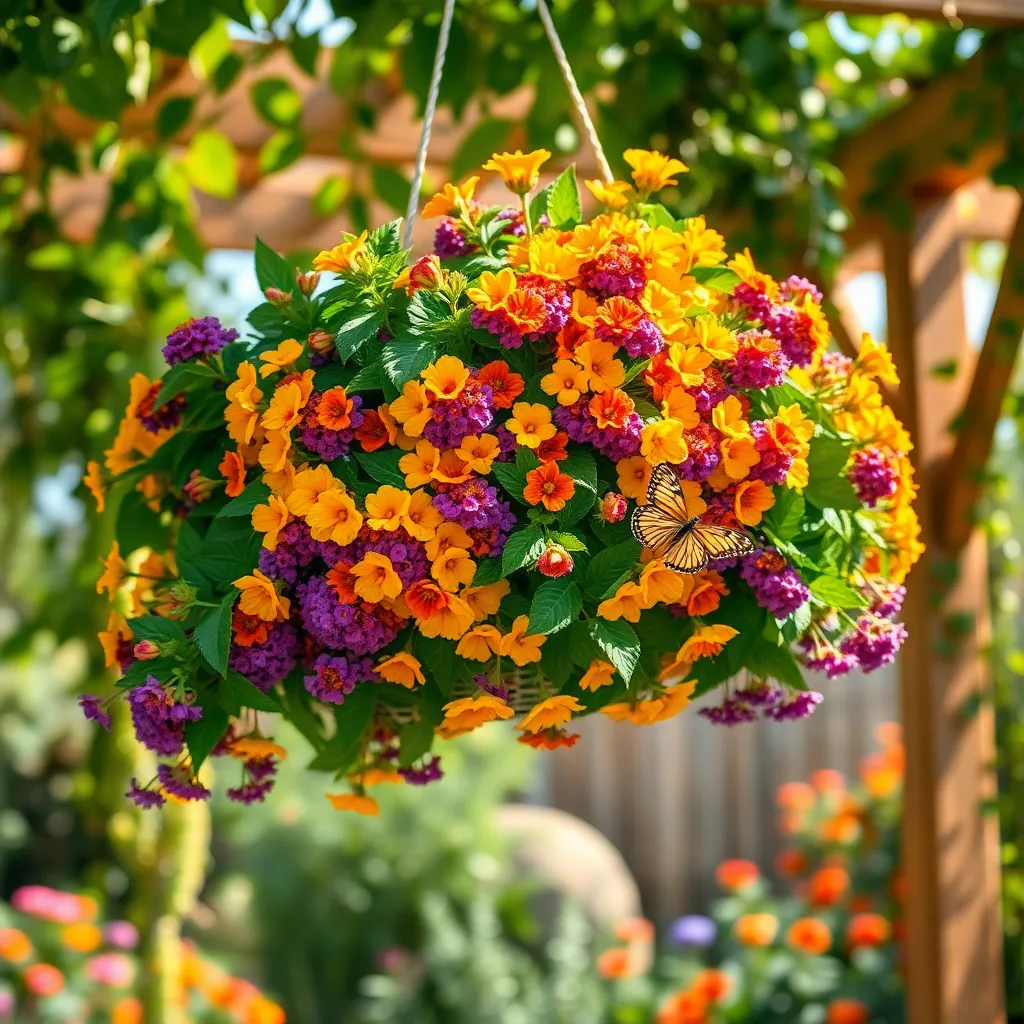
Lantana is a vibrant and hardy plant that produces clusters of small flowers, perfect for attracting butterflies to your garden. These flowers bloom in a variety of colors, ranging from vivid reds and oranges to soft pastels, creating a beautiful tapestry that draws pollinators.
When growing lantana, it is important to provide them with plenty of sunlight, as they thrive in full sun conditions. Well-draining soil is essential for healthy growth, so consider mixing sand or perlite into your potting mix to enhance drainage.
Watering lantana should be done with care, as overwatering can lead to root rot, while underwatering may hinder blooming. Aim to water deeply but infrequently, allowing the soil to dry out slightly between waterings to maintain optimal moisture levels.
For those looking to give their lantana an extra boost, consider fertilizing monthly with a balanced, slow-release fertilizer during the growing season. Pruning spent blooms and leggy stems will promote bushier growth and more prolific flowering, ensuring your lantana remains a butterfly magnet throughout the season.
Petunia (Fragrant Night Blooms for Moths)
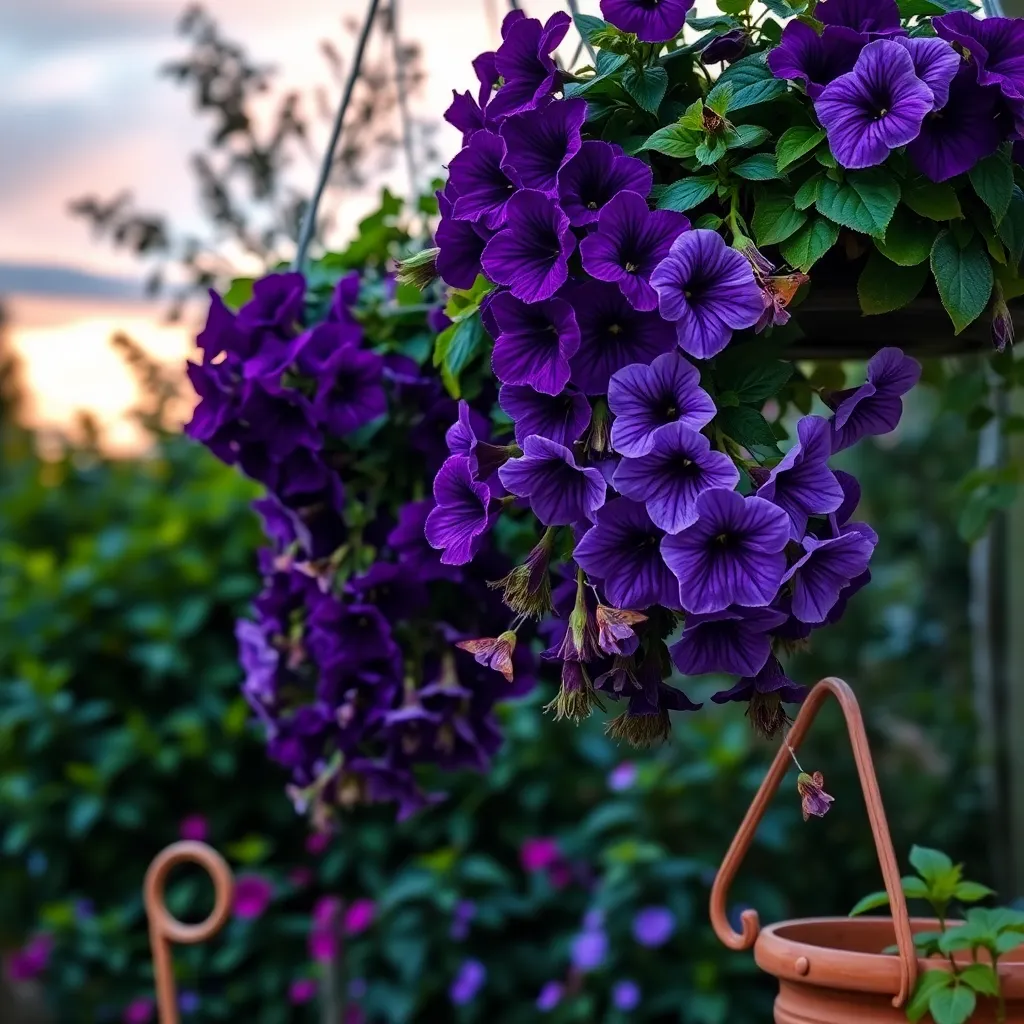
Petunias, especially those with fragrant blooms, are an excellent choice for attracting nocturnal pollinators like moths. These plants are known for their evening fragrance, which becomes most intense at dusk, creating a lovely sensory experience while supporting your garden’s ecosystem.
If you plan to grow petunias, ensure they receive full sun, which is essential for their robust growth and abundant flowering. Choose a well-draining soil mix with a pH ranging from 6.0 to 7.0, as petunias thrive in slightly acidic to neutral conditions.
For watering, it’s important to keep the soil consistently moist but not waterlogged, especially during the growing season. A good rule of thumb is to water them every couple of days, adjusting based on rainfall and local climate conditions.
To enhance blooming, deadhead spent flowers regularly, which encourages the plant to produce more flowers. Advanced gardeners can benefit from pinching back stems to promote bushier growth, leading to an even more spectacular display of blooms.
Verbena (Long-lasting Blooms for Bees)
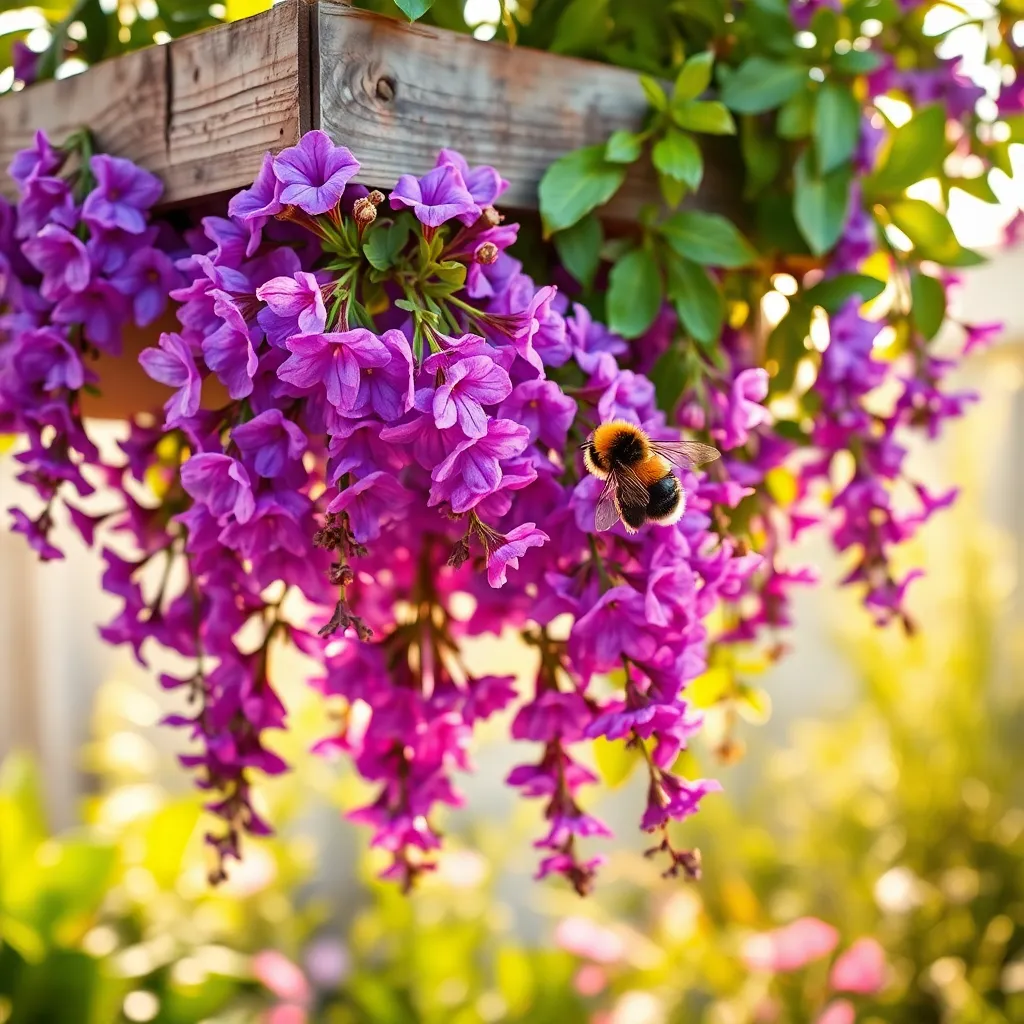
Verbena is a vibrant choice for hanging baskets, offering long-lasting blooms that are particularly attractive to bees. These hardy plants thrive in full sun and well-draining soil, making them perfect for sunny spots on your porch or balcony.
For optimal growth, water verbena regularly but avoid waterlogging, which can lead to root rot. A balanced, water-soluble fertilizer applied every four to six weeks will help maintain their lush appearance and prolong the blooming period.
Beginners will appreciate verbena’s resilience and ability to bloom throughout the summer with minimal fuss. For more experienced gardeners, experimenting with different verbena varieties such as trailing or upright types can add visual interest and variety to your pollinator-friendly garden.
Deadheading spent blooms is a simple yet effective way to encourage more flowers and keep your plants looking tidy. If you’re growing verbena in containers, consider using a high-quality potting mix to ensure proper drainage and nutrient availability.
Begonia (Shaded Beauty for Hoverflies)

Begonias are a fantastic choice for gardeners looking to add a splash of color while attracting hoverflies, which are excellent pollinators. These plants thrive in shaded areas, making them perfect for hanging baskets under trees or on shaded porches.
When growing begonias, it’s essential to use well-draining soil to prevent root rot, as they prefer not to sit in water. A mix of peat moss and perlite can be an effective medium for these beauties, providing both nutrient retention and drainage.
Water begonias moderately, allowing the soil to dry out slightly between waterings to avoid overwatering. For optimal growth, fertilize them with a balanced, water-soluble fertilizer every four weeks during the growing season.
Experienced gardeners can enhance their begonia care by removing faded blooms, which encourages more prolific flowering. This practice not only keeps the plants looking fresh but also stimulates continuous blooming, ensuring a steady supply of nectar for hoverflies.
Calibrachoa (Mini-Petunias for Diverse Pollinators)
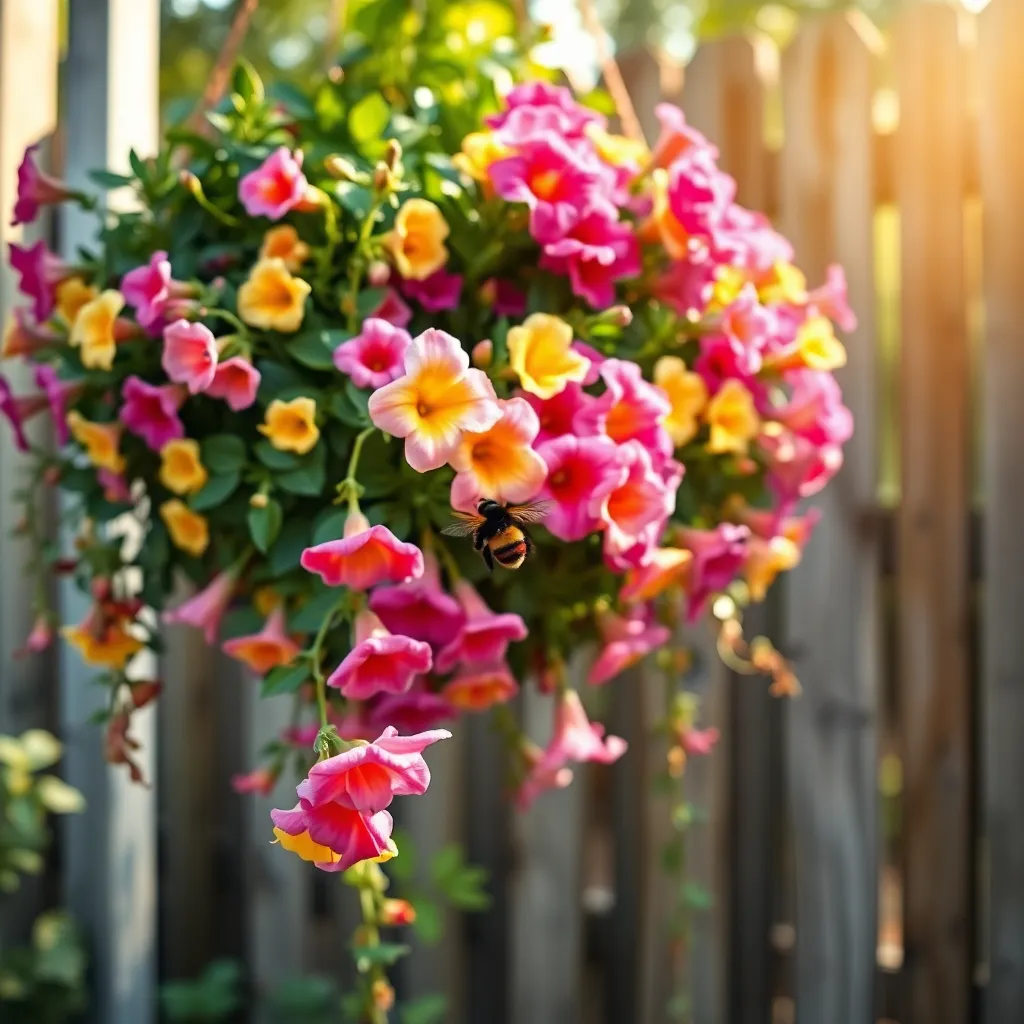
Calibrachoa, often known as mini-petunias, are a vibrant addition to any hanging garden, attracting a variety of pollinators including bees and butterflies. They thrive in full sun and require well-draining soil, making them an excellent choice for hanging baskets where water can run through easily.
Ensure you water calibrachoa regularly, allowing the soil to dry out slightly between waterings to prevent root rot. To keep these plants blooming prolifically, apply a balanced, water-soluble fertilizer every two weeks during the growing season.
For gardeners looking to maximize their impact on pollinators, consider planting calibrachoa in a mix of colors. This variety not only enhances visual appeal but also attracts a diverse range of pollinators, each drawn to different hues.
Advanced gardeners can pinch back the stems of calibrachoa to encourage bushier growth and more blooms. Additionally, deadheading spent flowers regularly will promote continuous flowering throughout the season, ensuring your garden remains a vibrant, pollinator-friendly space.
Lobelia (Blue Blooms for Long-Tongued Bees)
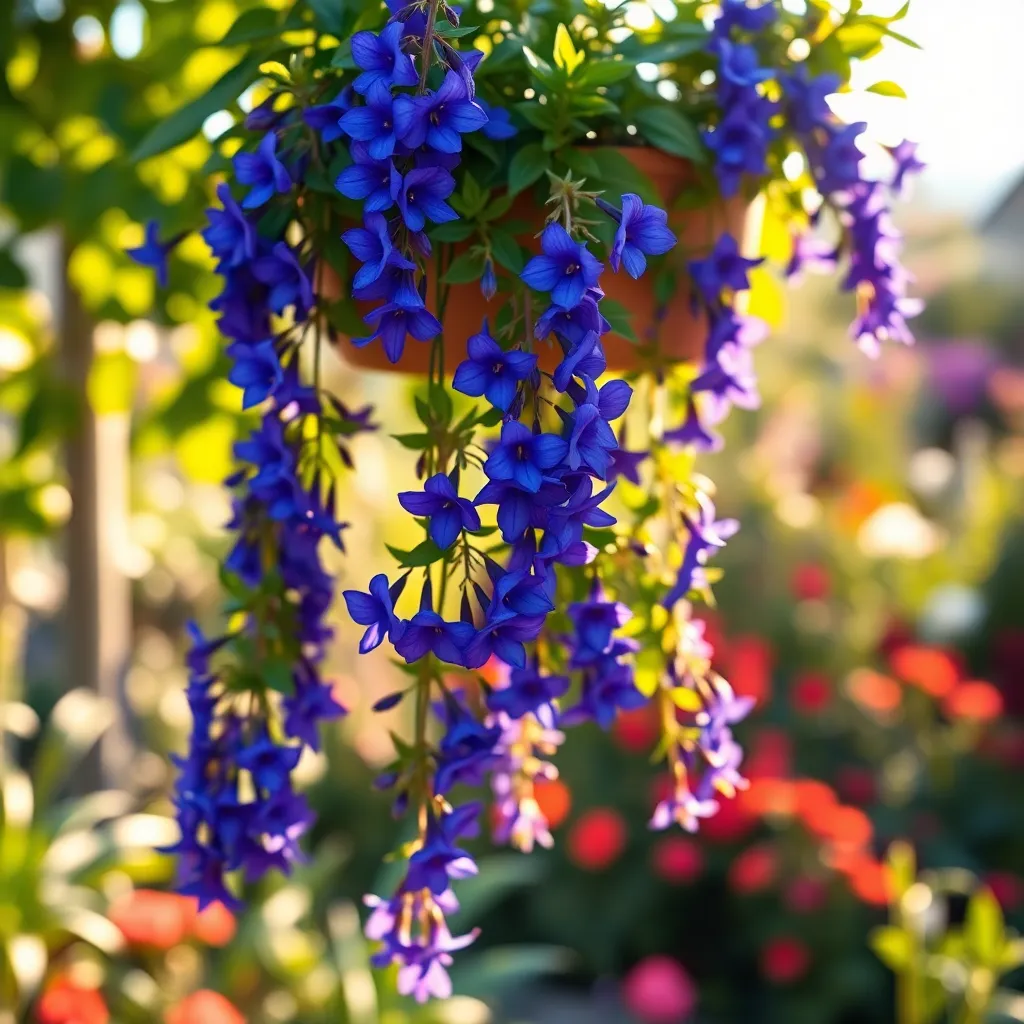
Known for its vibrant blue blooms, lobelia is a magnet for long-tongued bees and a delightful addition to hanging baskets. These plants thrive in partially shaded areas, making them ideal for spots that receive morning sun and afternoon shade.
To cultivate healthy lobelia, use a well-draining potting mix rich in organic matter. Water consistently to keep the soil moist but not soggy, ensuring the roots are never left in standing water.
For beginners, starting lobelia from nursery plants is the easiest route, while experienced gardeners can propagate them from seeds. Sow seeds indoors 10-12 weeks before the last frost date, lightly pressing them into the soil without covering, as they require light to germinate.
Regular deadheading will encourage continuous blooming throughout the growing season. For those seeking a lush display, consider a balanced, water-soluble fertilizer every two weeks to promote vigorous growth.
Sweet Alyssum (Honey-Scented Blooms for Beneficial Insects)
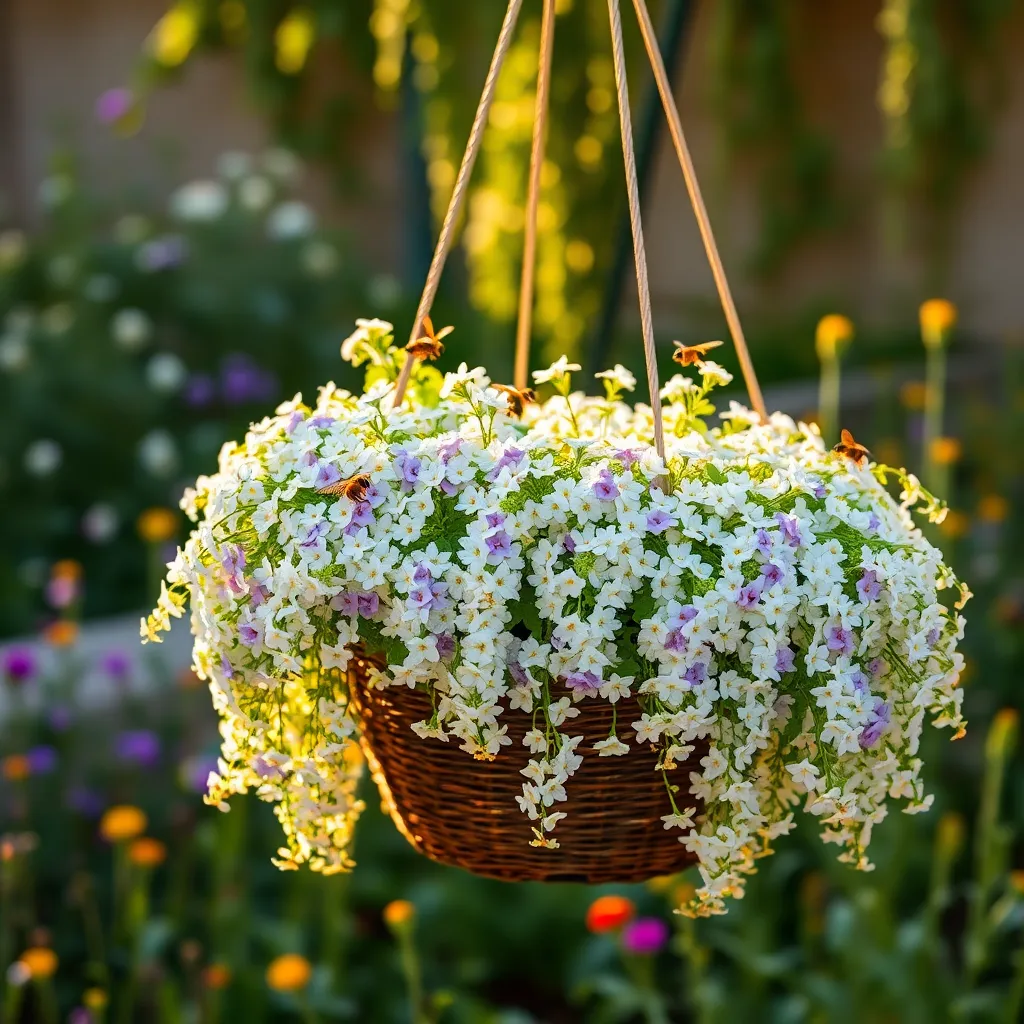
Sweet Alyssum is a delightful addition to hanging gardens, known for its honey-scented blooms that attract numerous beneficial insects. These flowers, thriving in a variety of climates, are especially beneficial for inviting ladybugs and lacewings, which help control pest populations.
When planting Sweet Alyssum, choose a well-draining potting mix to prevent root rot. Position your hanging basket in a spot that receives full sun to partial shade to ensure the best blooming results.
Watering is straightforward; maintain consistent moisture without overwatering to keep the plants healthy. During peak summer, check the soil regularly, as hanging baskets dry out faster than ground plants.
For gardeners looking to enhance growth, a balanced, water-soluble fertilizer applied every 4-6 weeks can be beneficial. Prune back the plants lightly after the first bloom to encourage a second flush of flowers, keeping your garden lively and inviting for pollinators throughout the season.
Nasturtium (Peppery Blooms for Pollinator Diversity)
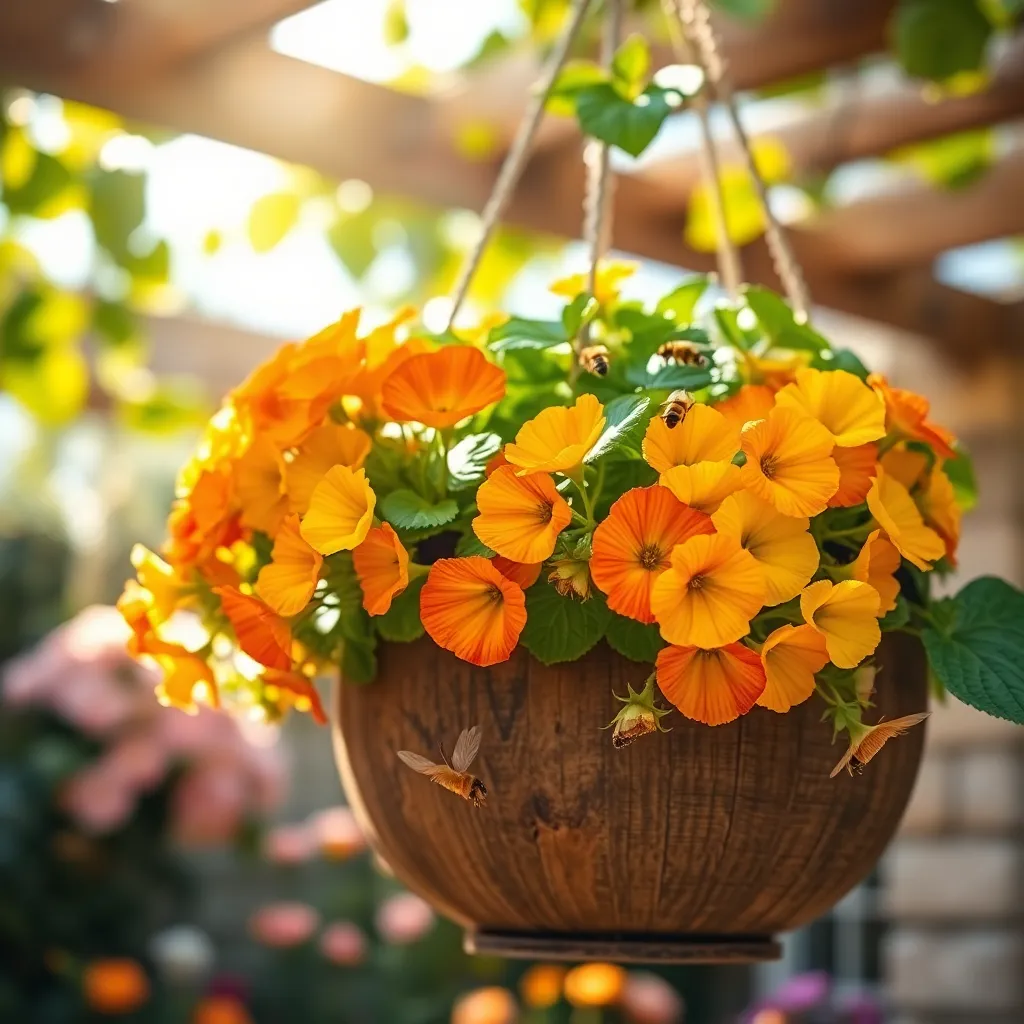
Nasturtiums are not only visually striking with their bright, peppery blooms, but they are also excellent at attracting a diverse range of pollinators. These vibrant flowers create a lively atmosphere in any garden, making them a perfect choice for hanging baskets.
To ensure healthy growth, plant nasturtiums in well-draining soil and position them in a location that receives full sun to partial shade. Consistent watering is essential, especially during dry spells, but be careful not to overwater as nasturtiums prefer slightly dry conditions.
For beginners, it’s worth noting that nasturtiums are easy to grow from seed, germinating quickly when planted after the last frost. More experienced gardeners can experiment by planting different varieties to attract a wider range of pollinators, such as bees, butterflies, and even hummingbirds.
Advanced growers may consider using nasturtiums as companion plants, as they can help repel certain pests like aphids while attracting beneficial insects. Regular deadheading will promote more blooms, keeping your hanging baskets luscious and vibrant throughout the growing season.
Trailing Ivy Geranium (Resilient Blooms for All-Weather Pollinators)
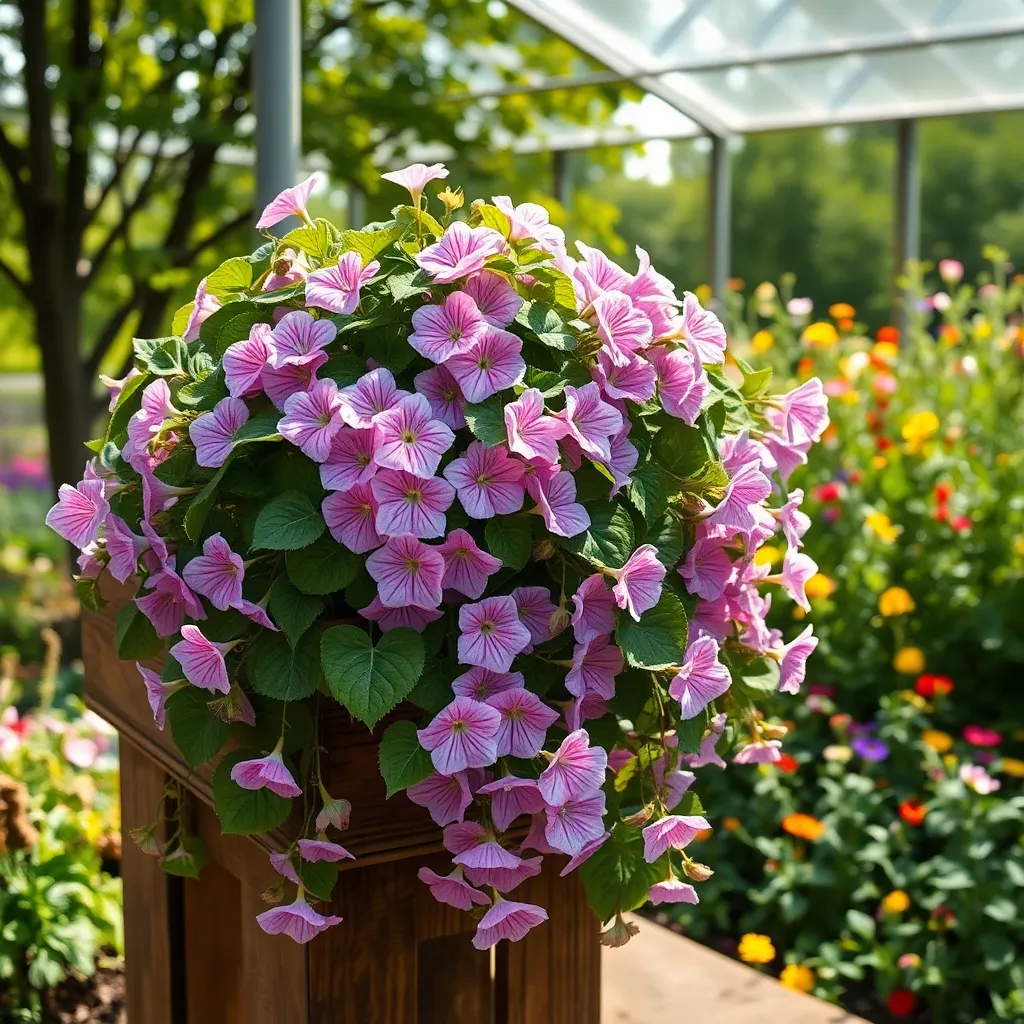
Trailing Ivy Geraniums are a delightful choice for hanging planters, offering a cascade of vibrant blooms that attract a diverse range of pollinators. Known for their resilience, these plants thrive in various climates, making them an excellent option for gardeners seeking reliable color throughout the seasons.
To ensure thriving Ivy Geraniums, plant them in well-draining soil, such as a mix of potting soil and perlite, which aids in avoiding root rot. Regular watering is essential, especially during dry spells, but be mindful not to overwater; the soil should be kept moist but not waterlogged.
Position your hanging baskets in a location where they receive ample sunlight, ideally around six hours a day for optimal blooming. Despite their sun-loving nature, Ivy Geraniums can tolerate some shade, which is beneficial in hotter climates to prevent scorching of the leaves.
For gardeners looking to enhance the health and vibrancy of their Ivy Geraniums, regular deadheading of spent blooms will encourage more flowers. Additionally, feeding with a balanced, water-soluble fertilizer every four to six weeks can boost growth and flowering, ensuring your plants remain lush and attractive to pollinators.
Conclusion: Growing Success with These Plants
As we’ve journeyed through the vibrant world of hanging plants, we’ve uncovered the unique beauty and benefits of ten remarkable varieties: from the cascading allure of the Fuchsia to the charming resilience of the Lobelia, each plant offers its own magnetism to pollinators. The delicate blooms of the Petunia, the lush appeal of the Begonia, and the aromatic draw of the Lavender are just a few more that enrich your space and nurture the vital relationships between plants and pollinators. Embrace the elegance of the Lantana, the simplicity of the Geranium, the vivid splendor of the Calibrachoa, the tropical touch of the Mandevilla, and the exquisite Nectar-rich Salvia. Together, these plants create a harmonious environment that fosters growth and connection.
Now, take a moment to envision your outdoor sanctuary brimming with life. As your actionable next step, visit a local nursery or explore online marketplaces to select one of these plants and start your journey towards a thriving, pollinator-friendly garden.
To ensure these insights remain at your fingertips, bookmark this article for future reference. By nurturing these natural connections, you’re setting the stage for ongoing relationship success and cultivating a garden that flourishes with life and love. Your empowered green thumb is just the beginning!

